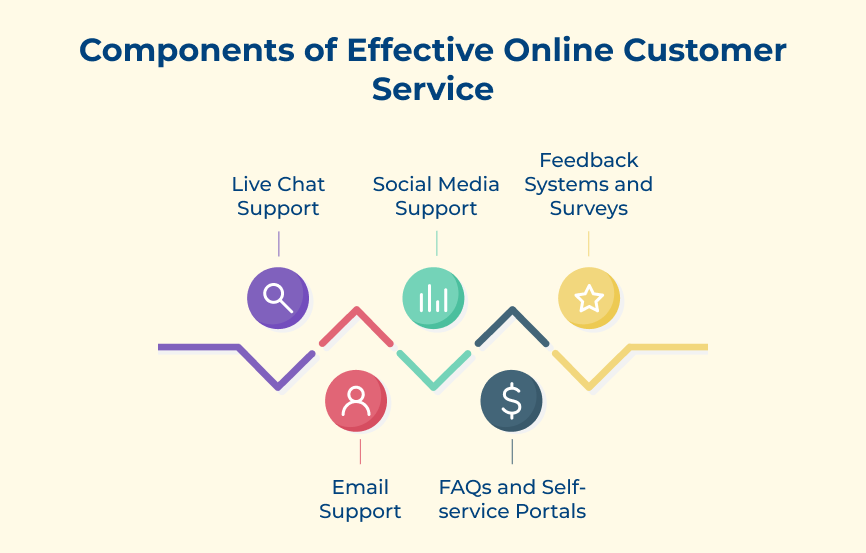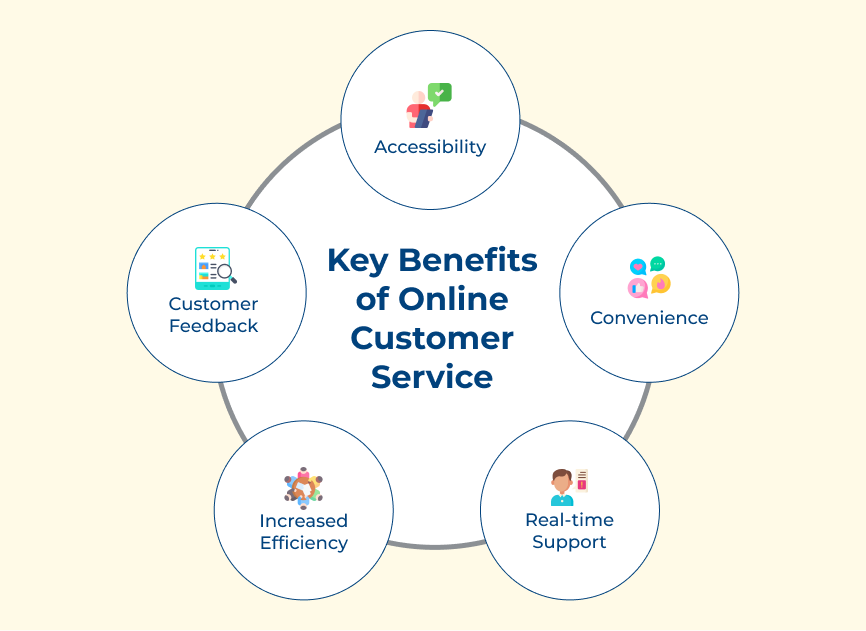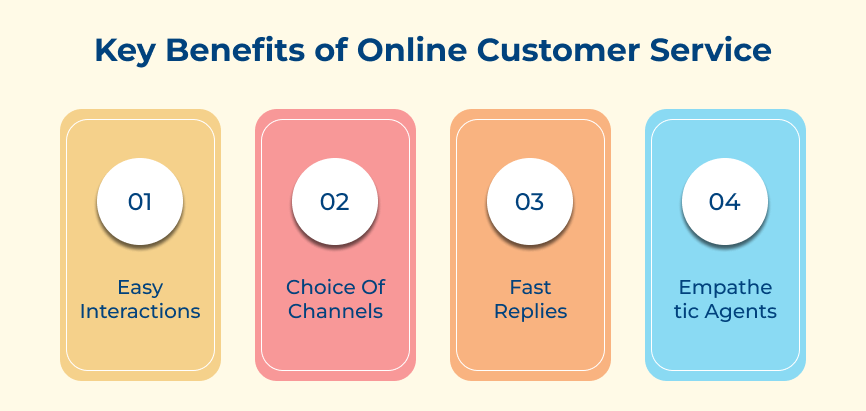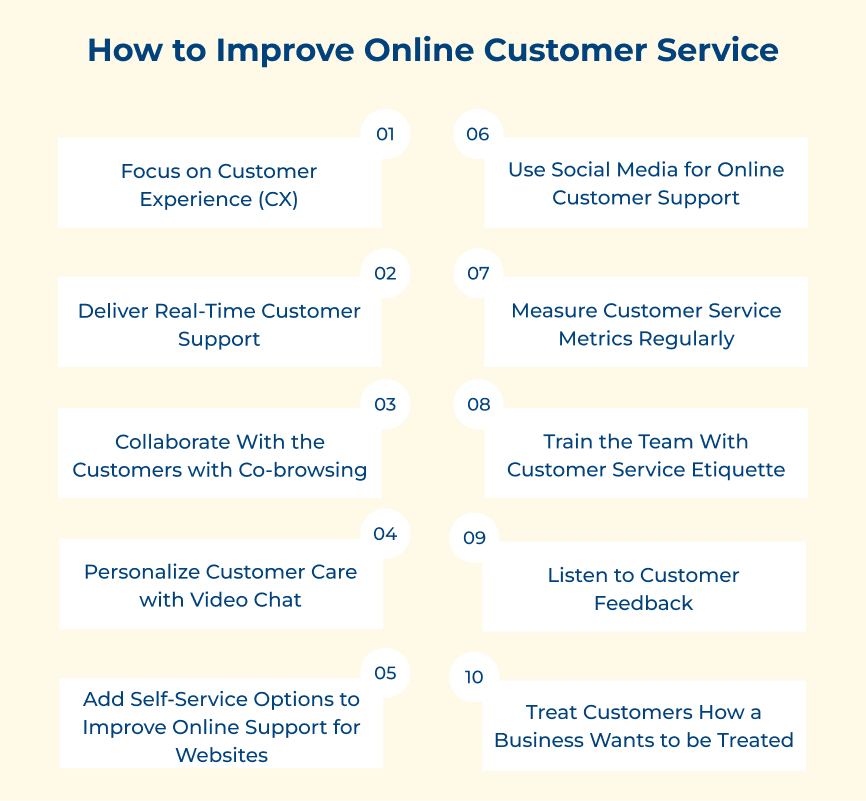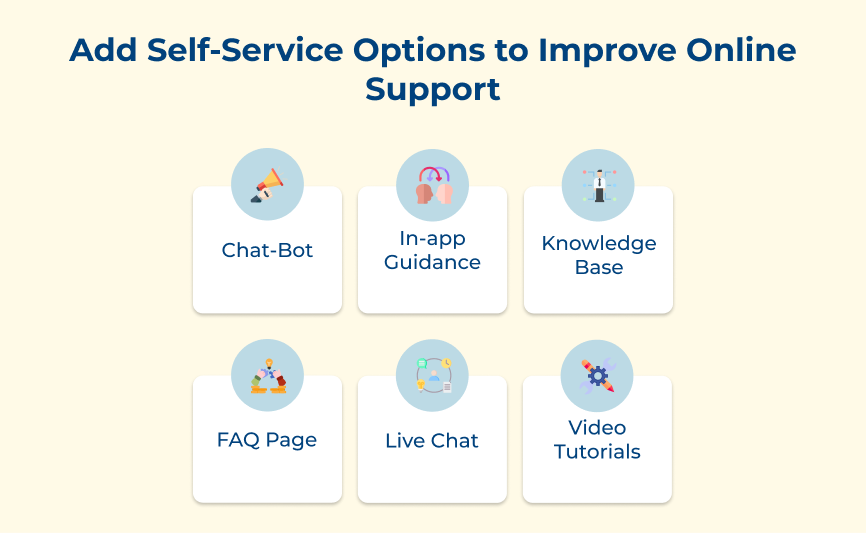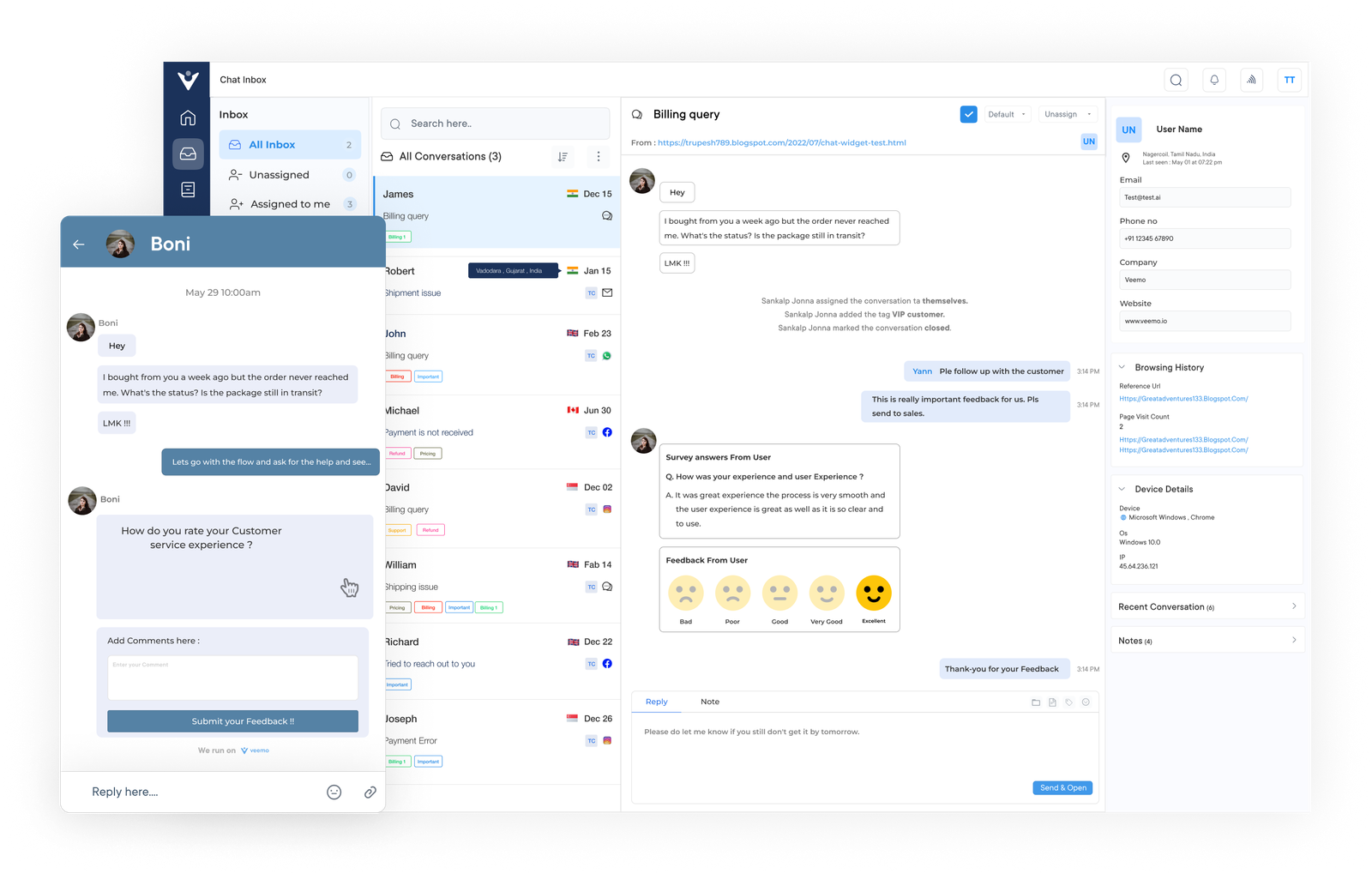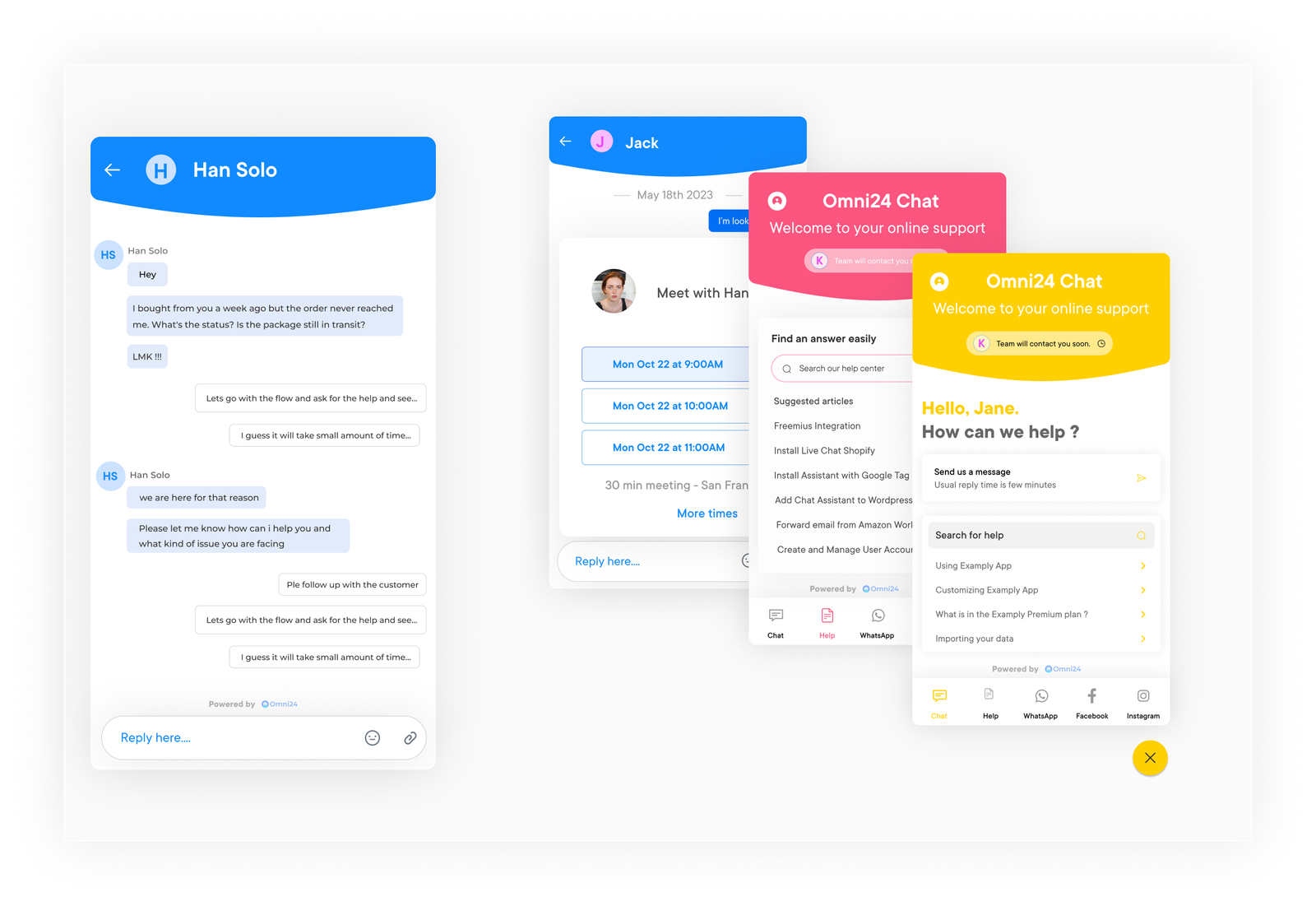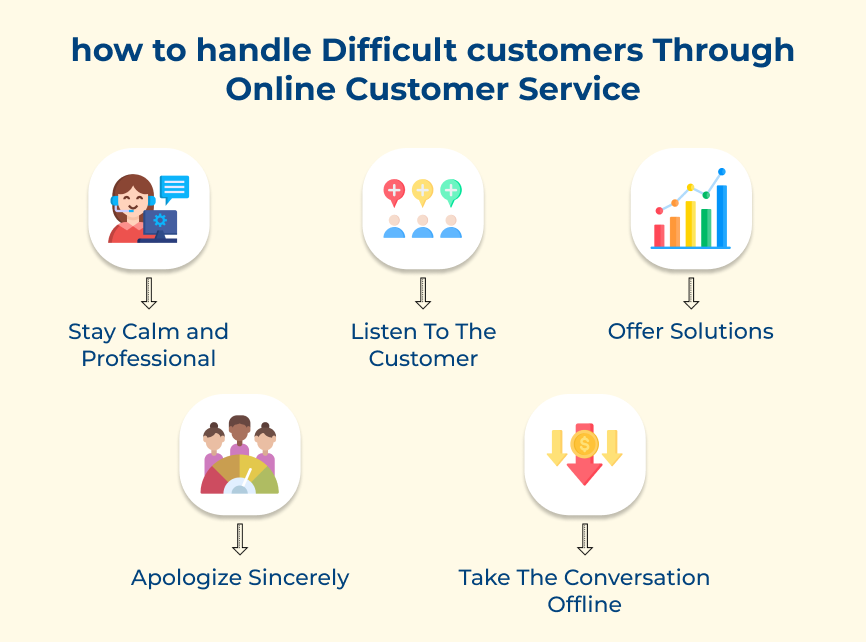Let’s assume a company implements a self-service knowledge base on its website. Customers can easily search for answers to common questions or issues. It enhances the customer experience by offering instant help and allows support agents to focus on complex inquiries.
Best practices:
- Create a comprehensive FAQ section on their website with detailed answers to common customer inquiries.
- Implement a live chat feature with automated responses to guide customers through troubleshooting steps.
- Offer interactive tutorials or how-to guides to help customers navigate through the website or use the products/services effectively.
6. Use Social Media for Online Customer Support
Using social media for online customer support has become an effective strategy to improve online customer service. Social media platforms like Facebook, Twitter and Instagram allow businesses to interact with customers in real time. 42% of customers expect a response to their queries or issues within 30 minutes on social media.
The strategy enhances service by offering customers a fast and easy way to contact businesses with inquiries. Customers can quickly receive responses by messaging on social media instead of waiting on hold or for email replies.
Best practices:
- Monitor social media platforms regularly for customer inquiries and respond promptly.
- Use chatbots or automated responses to provide immediate assistance outside of business hours.
- Personalize responses and show empathy towards customers to build positive relationships.
7. Measure Customer Service Metrics Regularly
One of the most effective strategies to improve online customer service is to measure customer service metrics regularly. Businesses can track key performance indicators like response time and resolution rates to improve the customer experience.
Regularly measuring customer service metrics helps businesses track performance trends and identify issues. Let’s consider consistently slow response times may signal a requirement for more staff or streamlined processes for timely customer support.
Best practices:
- Set specific goals for customer service metrics and track progress towards the goals regularly.
- Use customer feedback surveys to collect data on customer satisfaction and identify areas for improvement.
- Utilize customer service software to track and analyze metrics in real time, enabling quick adjustments to improve service quality.
8. Train the Team With Customer Service Etiquette
Effective customer service etiquette is a crucial best practice for improving online customer service. Training the team in customer service etiquette can enhance customer experience. It increases the chances of repeat business. It can lead to increased customer satisfaction, loyalty and positive reviews for the business.
Let’s assume that a customer service representative is trained in proper etiquette. They will be able to handle a customer complaint with professionalism and empathy. It leads to a satisfactory resolution for the customer.
Best practices:
- Offer regular customer service etiquette training to equip the team with skills for effective customer interactions.
- Encourage active listening and empathy by stressing the significance of understanding customers’ needs.
- Implement a feedback system where customers can rate their interactions with the team. It allows businesses to identify areas for improvement and further training.
9. Listen to Customer Feedback
Listening to customer feedback is one of the most effective strategies to improve online customer service. Listening to customers helps businesses understand what works and what needs improvement. It can lead to better customer satisfaction in the long run.
Let’s consider that customers are consistently complaining about slow response times to inquiries. The business can prioritize improving its communication channels to provide quicker solutions.
Best practices:
- Set up feedback channels such as surveys, comment sections and social media monitoring to gather customer opinions.
- Analyze feedback data regularly to identify trends and patterns in customer complaints or praises. Use the information to make informed decisions on service improvements.
- Actively engage with customers by responding to feedback, addressing concerns and implementing changes based on their suggestions.
10. Treat Customers How a Business Wants to be Treated
Treating customers how a business wants to be treated is a common courtesy. It is also an effective strategy to improve online customer service. The strategy focuses on treating customers as the business would like to be treated.
Businesses can enhance online customer service by providing a positive, personalized experience that respects customer preferences. It leads to increased customer satisfaction, loyalty and retention rates. Customers tend to return and recommend a business when they feel valued.
Best practices:
- Responding to inquiries and concerns promptly
- Personalizing interactions and addressing customers by name
- Going the extra mile to exceed customer expectations and provide exceptional service.
Online Customer Service Vs Online Customer Support
While similar, key differences can significantly impact customer experience. Here are five key online customer service vs online customer support differences:
1. Nature of Interaction
Online customer service includes handling inquiries, resolving issues and assisting customers with questions. It focuses on delivering a positive customer experience and building trust with customers.
Online customer support is more transactional. It includes solving technical problems, troubleshooting issues and resolving customer concerns.
2. Communication Channels
Online customer service is usually provided through various communication channels. It includes email, live chat, social media and phone support. The goal is to be accessible to customers and provide timely assistance.
Online customer support includes technical assistance via forums, knowledge bases and ticketing systems. Customers can find solutions to their technical issues independently.
3. Skill Set and Training
Online customer service representatives are trained in communication, product knowledge and skills to resolve customer issues. They are focused on delivering a personalized and positive customer experience.
Online customer support specialists offer technical expertise and problem-solving skills. They are trained in resolving complex issues and provide solutions to customers.
4. Response Time and Resolution
Online customer service aims to promptly address customer inquiries, feedback and complaints for satisfaction. The focus is on maintaining a high level of customer service and meeting customer expectations.
Online customer support prioritizes resolving technical issues efficiently and effectively. It often follows specific procedures to ensure comprehensive resolution.
5. Proactive vs. Reactive Approach
Online customer service proactively engages with customers to address needs, provide assistance and anticipate issues.
Online customer support typically follows a reactive approach. Specialists tackle customer inquiries and technical issues promptly, emphasizing problem-solving.
4 Best Online Customer Service Tools
Following are the four leading online customer service tools that can transform how you interact with your customers, bringing efficiency and satisfaction to the heart of your operations.
1. Veemo Support






